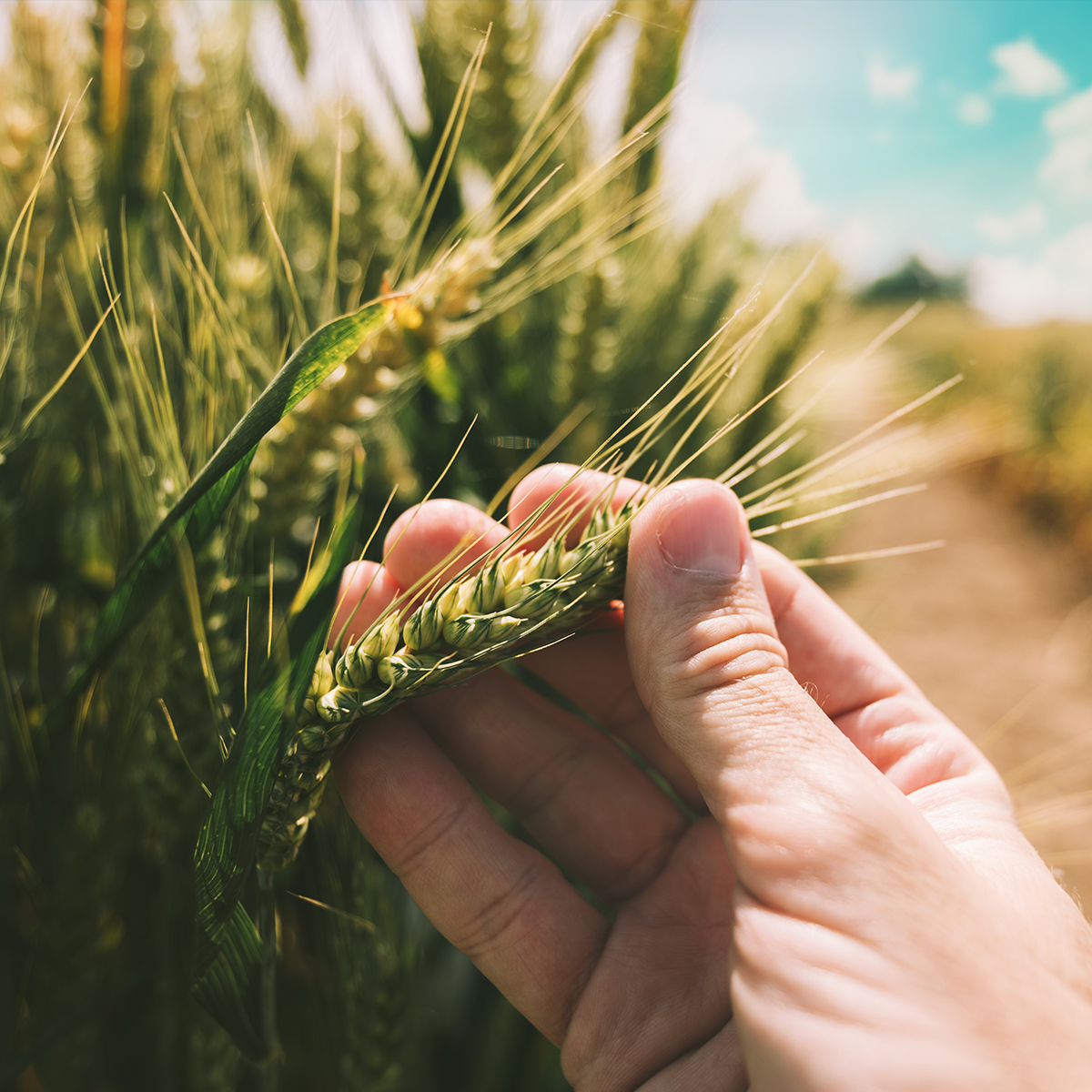Did you know a bushel of wheat makes about 42 pounds of pasta or 210 servings of spaghetti? 😮 Check out more interesting facts about wheat below courtesy of wheatworld.org.
- Wheat is a member of the grass family that produces a dry, one-seeded fruit commonly called a kernel.
- More than 17,000 years ago, humans gathered the seeds of plants and ate them. After rubbing off the husks, early people simply chewed the kernels raw, parched or simmered.
- Wheat originated in the “cradle of civilization” in the Tigris and Euphrates river valley, near what is now Iraq.
- The Roman goddess, Ceres, who was deemed protector of the grain, gave grains their common name today – “cereal.”
- Wheat, used for white bread, pastries, pasta, and pizza, has been the principal cereal crop since the 18th century.
- Wheat was introduced by the first English colonists and quickly became the main cash crop of farmers who sold it to urban populations and exporters. In colonial times its culture became concentrated in the Middle Colonies, which became known as the “bread colonies”.
- Wheat is the primary grain used in U.S. grain products — approximately three-quarters of all U.S. grain products are made from wheat flour.
- Wheat is grown in 42 states in the United States.
- Six classes bring order to the thousands of varieties of wheat. They are: hard red winter (HRW), hard red spring (HRS), soft red winter (SRW), hard white (HW), soft white (SW) and durum.
- In 2008/2009, U.S. farmers grew nearly 2.4 billion bushels of wheat on 63 million acres of land.
- In the United States, one acre of wheat yields an average of around 40 bushels of wheat.
- About half of the wheat grown in the United States is used domestically.
- In 2008, the state of Kansas was the largest wheat producer in the United States with North Dakota a close second.
- Kansas is number one in flour milling in the United States.
- Kansas produces enough wheat each year to bake 36 billion loaves of bread and enough to feed everyone in the world, over six billion people, for about 2 weeks.
- An acre of Kansas wheat produces enough bread to feed nearly 9,000 people for one day.
- One bushel of wheat contains approximately one million individual kernels.
- One bushel of wheat weighs approximately 60 pounds.
- One bushel of wheat yields approximately 42 pounds of white flour OR 60 pounds of whole-wheat flour.
- A bushel of wheat yields 42 one-and-a-half pound commercial loaves of white bread OR about 90 one-pound loaves of whole wheat bread.
- There is approximately 16 ounces of flour in a one-and-a-half pound loaf of bread.
- The first bagel rolled into the world in 1683 when a baker from Vienna Austria was thankful to the King of Poland for saving Austria from Turkish invaders. The baker reshaped the local bread so that it resembled the King’s stirrup. The new bread was called “beugel,” derived from the German word stirrup, “bugel.”
- The traditional bagel is the only bread product that is boiled before it is baked.
- Never refrigerate bagels or any bread product. Bread products go stale up to 6 times faster in the refrigerator. Leave these products at room temperature or freeze them.
- A bushel of wheat makes about forty-five 24-ounce boxes of wheat flake cereal.
- Per capita consumption of pasta in the United States was 22 pounds in 1996 and in 2005 was at 19.52 pounds.
- A bushel of wheat makes about 42 pounds of pasta or 210 servings of spaghetti.
- If you eat pasta three times a week, it would take 70 weeks to eat all the pasta made from one bushel of durum.
- Semolina is coarsely ground durum with a texture somewhat like sugar. It is the best product for pasta.
- There are more than 600 pasta shapes produced worldwide.
- Approximately 3 billion pizzas are sold in the United States each year.
- The early crackers, or “biscuits” as the English called them, were handmade, hard-baked products made from flour and a little moisture.
- Crackers main ingredient is unbleached flour from soft red or soft white wheat.
- Ancient traditional tortillas were made from ground corn by Mexican natives as long as 2000 years ago. Flour tortillas only started to become popular in the 19th century.
- In the U.S. in 2000, there were 85 billion tortillas consumed, not including tortilla chips.



